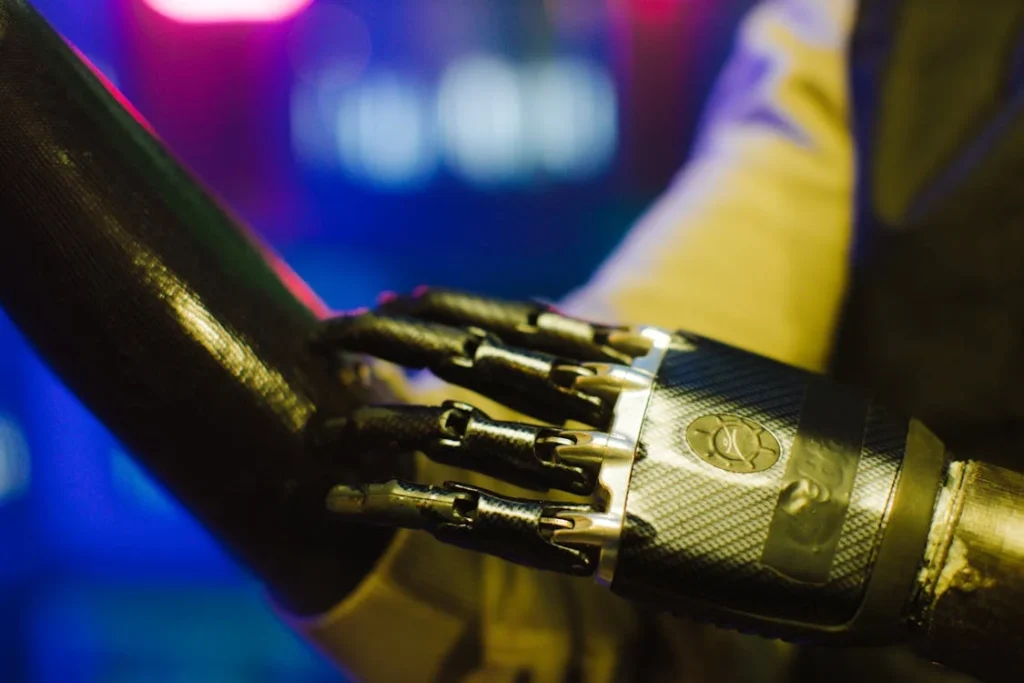Losing an arm or a hand is a life-changing experience, but advanced prosthetic technology is making it easier for people to regain independence. Today’s upper limb prosthetics offer incredible functionality, allowing users to perform everyday tasks with precision and ease. However, these devices come at a cost, and understanding the pricing factors can help users make an informed decision.
The cost of an upper limb prosthetic varies widely depending on the type, technology, and level of customization. From simple body-powered prosthetics to high-tech bionic hands with myoelectric control, each option has its own price range. The good news is that there are ways to manage expenses and find a prosthetic that fits both your needs and budget.
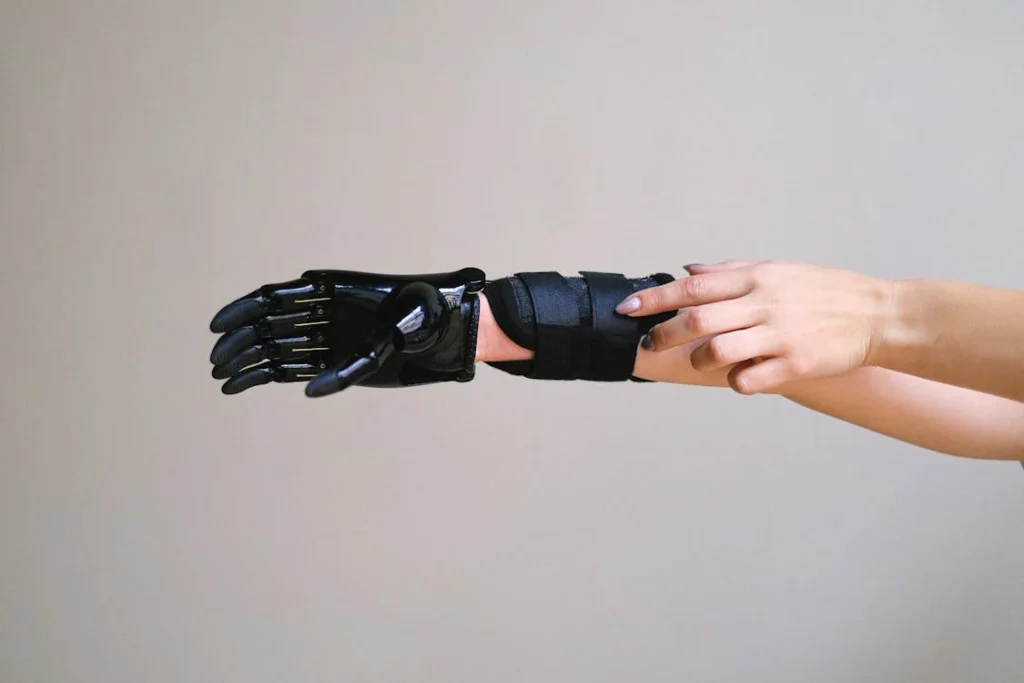
Understanding the Cost of Upper Limb Prosthetics
The price of an upper limb prosthetic depends on several factors, including the level of amputation, the technology used, materials, and customization.
The more advanced the prosthetic, the higher the cost—but that doesn’t mean basic models aren’t effective.
Understanding what goes into pricing can help you make an informed choice that balances functionality and affordability.
Types of Prosthetics and Their Costs
Prosthetics for upper limb amputations fall into different categories, each with its own price range. Basic body-powered prosthetics are the most affordable option, while myoelectric and bionic hands, which use electronic sensors and artificial intelligence, tend to be more expensive.
A body-powered prosthetic relies on a harness and cable system controlled by the user’s upper body movements. These prosthetics are durable, lightweight, and relatively inexpensive compared to high-tech options.
They work well for people who need a strong, simple solution for gripping objects and performing manual tasks. While they don’t offer as much flexibility as bionic hands, they are highly reliable and require little maintenance.
A myoelectric prosthetic, such as Grippy™ by Robobionics, is a more advanced option that uses sensors placed on the residual limb to detect muscle signals. These signals control the movement of the prosthetic hand, allowing users to perform complex tasks with precision.
The cost of myoelectric prosthetics is higher due to the technology involved, but they offer a more natural and intuitive experience. Many of these devices come with multiple grip patterns, allowing users to hold different objects securely.
At the highest end of the spectrum are bionic prosthetics, which use artificial intelligence, sensory feedback, and advanced robotics to mimic natural hand movements.
These prosthetics can adjust grip strength, recognize movement patterns, and even provide a sense of touch through haptic feedback. While these features offer greater control and independence, they also come with a higher price tag.
Materials and Their Impact on Cost
The materials used in a prosthetic play a major role in pricing. Traditional prosthetics were made from metal and plastic, but modern designs incorporate lightweight, durable materials like carbon fiber, titanium, and advanced polymers.
These materials improve comfort and reduce strain on the body, but they also add to the cost. A lighter prosthetic reduces fatigue, making it easier to wear throughout the day.
However, choosing high-quality materials ensures the device lasts longer and performs better over time. While cheaper materials may lower upfront costs, they may not provide the durability needed for long-term use.
Customization and Fitting Costs
No two people are the same, which is why customization is essential for a comfortable and functional prosthetic. A poorly fitted prosthetic can cause pain, irritation, and limited mobility, making everyday activities difficult.
The process of creating a custom-fitted prosthetic involves 3D scanning, molding, and socket design, which can increase costs.
Modern prosthetics, including those designed by Robobionics, use 3D printing technology to create customized fits that are both precise and affordable.
By scanning the user’s residual limb, manufacturers can create a prosthetic that perfectly aligns with their shape, improving both comfort and usability.
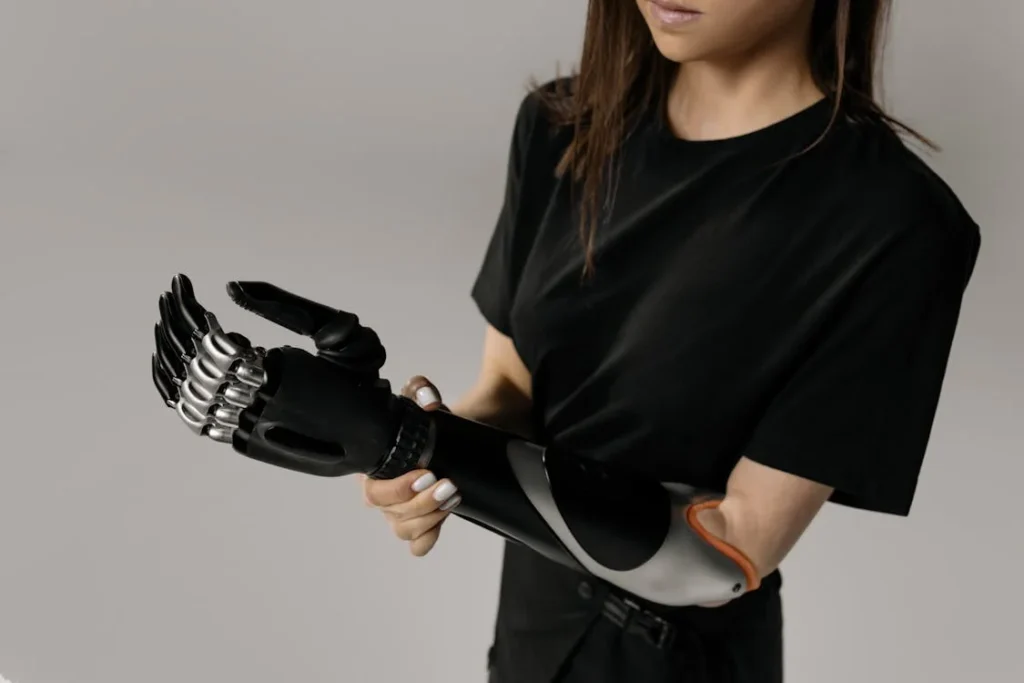
Hidden Costs and Long-Term Expenses of Prosthetic Use
The cost of an upper limb prosthetic goes beyond the initial purchase. Many users don’t realize that maintenance, repairs, training, and replacements all contribute to the total cost over time.
Understanding these hidden costs can help you plan your budget and avoid unexpected expenses.
Maintenance and Repairs
Like any advanced device, prosthetics require regular maintenance to function properly. Body-powered prosthetics are relatively low-maintenance, as they have fewer moving parts and no electronic components.
However, cables and harnesses may need to be replaced over time due to wear and tear.
Myoelectric and bionic prosthetics require more care. Since they rely on electronic sensors, motors, and batteries, they need periodic servicing to ensure proper function.
Dust, moisture, and accidental drops can damage delicate components, leading to costly repairs. Some high-end prosthetic models require software updates to improve performance, which may come with additional costs.
A well-maintained prosthetic can last several years, but routine check-ups with a prosthetist are necessary to keep it in top condition.
These visits ensure that the prosthetic is adjusted correctly, preventing discomfort and improving usability. Investing in regular maintenance can extend the life of your prosthetic, saving money in the long run.
Replacement Costs Over Time
Even with proper care, prosthetic devices do not last forever. Depending on usage, a prosthetic hand or arm may need to be replaced every three to five years.
Factors such as changes in the user’s residual limb, weight fluctuations, and natural wear affect the fit and function of the prosthetic over time.
For growing children, frequent replacements are necessary since their bodies are constantly changing. In such cases, modular prosthetics with adjustable parts can help reduce costs by allowing modifications instead of full replacements.
For adults, the need for a new prosthetic often arises when the current device no longer fits well or when newer technology offers better functionality.
While upgrading to a more advanced model can be expensive, the benefits often outweigh the costs, providing increased comfort, durability, and improved movement control.
Training and Rehabilitation Expenses
Adapting to a prosthetic limb is not an instant process. Users must undergo rehabilitation and training to learn how to control their new device effectively.
This is especially true for myoelectric and bionic prosthetics, which require muscle training and coordination exercises. Occupational therapy sessions can range in cost depending on location and duration.
Some advanced prosthetic manufacturers, including Robobionics, offer gamified rehabilitation programs that help users practice movements in an engaging way.
These programs improve adaptability while making training feel less repetitive and stressful.
For first-time users, professional guidance is essential in developing proper muscle control and avoiding bad habits that could lead to discomfort or limited functionality.
Learning to use a prosthetic correctly early on can prevent future medical costs related to muscle strain, joint pain, or poor posture.

How to Save Money on Advanced Upper Limb Prosthetics
The high cost of advanced prosthetics can feel overwhelming, but there are ways to make them more affordable.
By exploring financial assistance options, choosing cost-effective alternatives, and taking good care of your prosthetic, you can reduce expenses while still getting a high-quality device.
Planning ahead and knowing where to look for support can make a big difference in managing costs.
Exploring Insurance and Government Assistance
Health insurance can help cover some of the costs associated with prosthetics, but coverage varies depending on the provider and country.
Many insurance plans cover basic prosthetic devices but may have limitations when it comes to advanced myoelectric or bionic hands.
It’s important to check with your insurer to understand what is included and whether there are any restrictions. Some plans may require pre-authorization or medical documentation to approve coverage for a high-tech prosthetic.
In India, certain government programs and schemes offer financial aid for prosthetic users. Organizations supporting people with disabilities often provide funding or low-cost prosthetic options.
NGOs and charitable foundations also play a key role in making prosthetics more accessible by offering free or subsidized devices.
Applying for these programs early can improve your chances of receiving assistance.
Choosing a Cost-Effective Prosthetic Without Sacrificing Quality
The most expensive prosthetic is not always the best choice for every user. While bionic prosthetics offer advanced features, many people find that body-powered or hybrid models meet their needs at a lower cost.
A simple mechanical prosthetic can still provide good functionality and durability while being more affordable. Myoelectric hands, such as those offered by Robobionics, provide a balance between advanced control and affordability.
Newer 3D printing technology has also made it possible to produce high-quality prosthetics at a lower price, allowing for more customization without the high manufacturing costs.
Choosing a locally manufactured prosthetic instead of an imported one can also significantly reduce expenses while ensuring faster repairs and better support.
Extending the Life of Your Prosthetic Through Proper Care
Taking care of your prosthetic is one of the best ways to avoid unnecessary expenses. Regular cleaning prevents dirt and moisture from damaging sensitive components.
Storing the prosthetic in a safe place when not in use reduces the risk of accidental damage. For electronic prosthetics, keeping batteries charged properly and avoiding exposure to water or extreme temperatures helps extend their lifespan.
Routine check-ups with a prosthetist can prevent minor issues from becoming major problems. Small adjustments to the fit or alignment can improve comfort and prevent strain on the body.
By addressing minor wear and tear early, you can avoid costly repairs or replacements.
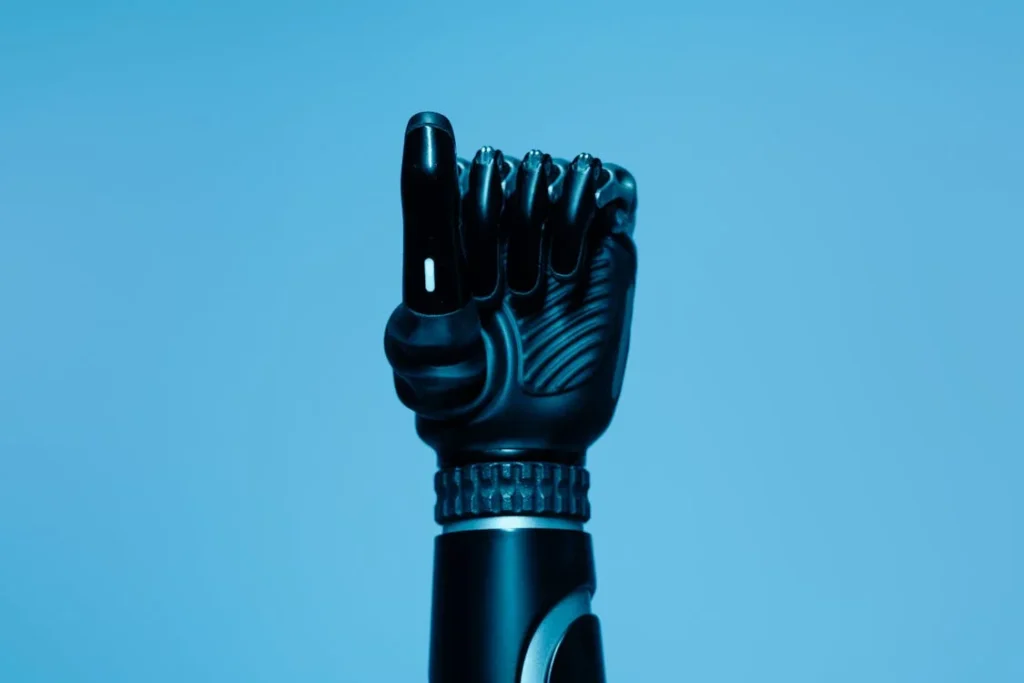
Finding Financial Support for Prosthetic Costs
The cost of an advanced upper limb prosthetic can be a significant investment, but many financial assistance programs and resources are available to help reduce the burden.
By exploring funding opportunities, applying for grants, and seeking community support, users can make prosthetics more affordable without compromising on quality or functionality.
Applying for Grants and Charitable Funding
Many organizations offer financial aid specifically for prosthetic users. These grants can cover partial or full costs of a prosthetic device, rehabilitation services, or necessary modifications.
In India, several NGOs and foundations support individuals with limb loss by providing subsidized or free prosthetics. Some international charities also extend assistance to those in need, particularly in developing countries.
Applying for these programs typically requires medical documentation, proof of financial need, and sometimes a referral from a healthcare professional.
It’s important to research application deadlines and eligibility criteria to increase the chances of receiving funding. Some programs operate on a first-come, first-served basis, so early application is recommended.
Crowdfunding and Community Support
With the rise of online fundraising platforms, many individuals have successfully raised money for prosthetic costs through crowdfunding.
Platforms allow users to share their stories and receive donations from friends, family, and even strangers who want to support their journey.
A well-written campaign that explains the need for a prosthetic and how it will improve quality of life can attract significant contributions. Local community organizations, religious institutions, and social groups can also be valuable sources of support.
Many communities organize fundraising events or connect individuals with sponsors who are willing to contribute toward medical expenses. Seeking help from multiple sources increases the likelihood of securing the necessary funds.
Employer and Workplace Assistance
Some companies offer financial assistance for employees who require a prosthetic device. Workplace insurance policies may cover part of the cost, particularly if the limb loss was due to a work-related injury.
Even if an employer does not provide direct funding, they may assist in the form of flexible payment plans, salary advances, or referrals to financial aid programs.
In cases where a prosthetic is necessary for job-related tasks, employers may offer to cover part of the cost as an accommodation under workplace disability policies.
It is worth discussing available options with human resource departments to determine what support may be available.
Educational Institutions and Student Aid
For students in need of a prosthetic, many educational institutions have disability assistance programs that provide funding or financial relief.
Universities and colleges often have grants or scholarships for students with disabilities, helping them access necessary medical devices.
Some student insurance policies also include coverage for prosthetics as part of their medical benefits. Reaching out to student support services can provide guidance on available options.
Some institutions even collaborate with medical organizations to offer prosthetic devices at a reduced cost for students in need.
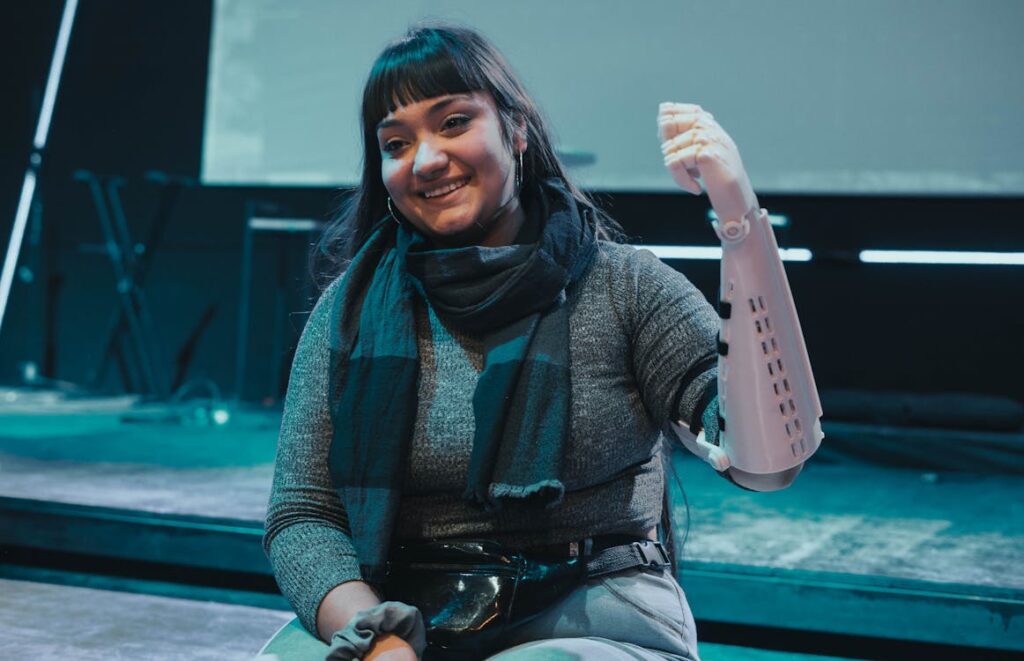
Making Smart Financial Decisions When Investing in a Prosthetic
Investing in an advanced upper limb prosthetic is a major financial decision, and careful planning can make the process more manageable.
By understanding payment options, comparing different prosthetic models, and considering long-term costs, users can make a smart choice that balances functionality and affordability.
Comparing Prosthetic Models and Features
Before making a purchase, it’s important to compare different prosthetic options based on features, durability, and cost.
Some prosthetics offer advanced functionalities like AI-driven movement and sensory feedback, but not every user needs these features.
Choosing a prosthetic that aligns with daily activities and lifestyle needs can prevent overspending on unnecessary technology.
For example, individuals who require a prosthetic for basic tasks such as holding objects or stabilizing items may find that a body-powered prosthetic meets their needs at a lower cost.
Those who need precise control for professional or social settings may benefit from a myoelectric prosthetic.
Customization options, such as different grip patterns and wrist movement, should also be considered when comparing devices.
Manufacturers like Robobionics offer cost-effective myoelectric solutions that balance advanced control with affordability.
Locally made prosthetics often come with the added benefit of faster support, lower repair costs, and easier customization compared to imported models.
Understanding Payment Plans and Financing Options
For those unable to pay the full cost upfront, many prosthetic providers offer financing plans that allow users to spread the cost over several months or years.
These plans make it easier to afford a high-quality prosthetic without straining finances. Some plans require an initial down payment, followed by monthly installments.
Medical loan programs are another option for financing a prosthetic.
Some banks and healthcare lenders offer low-interest loans for medical expenses, making it possible to afford a prosthetic while keeping payments manageable.
Checking the terms of these loans, including interest rates and repayment periods, ensures they fit within a long-term financial plan.
Certain prosthetic clinics and manufacturers also provide in-house payment plans with flexible options.
Discussing these possibilities with a provider can reveal alternative ways to reduce the financial burden.
Choosing a Prosthetic with Lower Lifetime Costs
While the upfront cost of a prosthetic is a major factor, it’s equally important to consider long-term expenses such as maintenance, repairs, and potential replacements.
Investing in a high-quality prosthetic with durable materials may cost more initially but can save money over time by reducing the need for frequent replacements.
Prosthetics that require extensive servicing or expensive replacement parts may lead to higher overall costs.
Asking about warranty coverage, expected lifespan, and service fees before making a purchase can help in selecting a cost-effective option.
Some manufacturers offer extended warranties or service packages that cover repairs, reducing unexpected expenses down the line.

The Role of Technology in Reducing Prosthetic Costs
As prosthetic technology continues to evolve, new innovations are making advanced upper limb prosthetics more affordable and accessible.
From 3D printing to AI-driven control systems, modern advancements are helping to reduce manufacturing costs while improving functionality.
Understanding how these technologies impact pricing can help users make better financial decisions when choosing a prosthetic.
3D Printing and Affordable Customization
One of the biggest breakthroughs in prosthetic development is the use of 3D printing.
Traditional prosthetic manufacturing involves time-consuming processes that require molds, casting, and manual adjustments, which significantly increase costs.
With 3D printing, prosthetic components can be created with precision at a fraction of the price.
Robobionics incorporates 3D printing technology to design lightweight and highly customized prosthetics.
By scanning a user’s residual limb, manufacturers can create a socket that fits perfectly without the need for extensive adjustments.
This not only reduces production time but also eliminates unnecessary costs associated with traditional manufacturing.
Another advantage of 3D printing is the ability to create replacement parts quickly and affordably.
Instead of purchasing an entirely new prosthetic due to minor damage or wear, users can simply replace specific components, making long-term maintenance more cost-effective.
Open-Source Prosthetic Designs
The growing trend of open-source prosthetic designs is also helping to lower costs.
Organizations and researchers around the world are developing free, shareable prosthetic blueprints that can be modified and produced using 3D printing.
These designs allow for the creation of functional prosthetics at a significantly lower price compared to commercially available options.
Some non-profit groups and prosthetic labs provide free access to these designs, making it easier for individuals to obtain an affordable prosthetic solution.
While open-source prosthetics may not have the same advanced technology as high-end bionic hands, they offer a practical and budget-friendly alternative for those who need basic functionality.
AI and Machine Learning for Cost-Effective Performance
Artificial intelligence and machine learning are playing a growing role in improving prosthetic performance while reducing costs.
AI-driven prosthetics can learn a user’s movement patterns and adapt over time, reducing the need for expensive custom programming.
Instead of requiring multiple in-person adjustments with a prosthetist, AI-based software can make real-time refinements, leading to better efficiency and lower servicing costs.
Smart prosthetics with self-learning capabilities can also improve battery efficiency, reducing power consumption and the need for frequent recharging.
This helps lower long-term expenses associated with battery replacements and maintenance.
Locally Manufactured vs. Imported Prosthetics
Another factor that significantly impacts pricing is whether a prosthetic is locally manufactured or imported.
Imported prosthetics often come with additional costs such as customs duties, shipping fees, and extended wait times for repairs.
In contrast, locally made prosthetics, such as those designed by Robobionics, offer faster service, more affordable pricing, and easier access to replacement parts.
By choosing a domestically produced prosthetic, users can benefit from reduced costs without sacrificing quality.
Many local manufacturers also provide personalized support, ensuring that users receive a device tailored to their specific needs.
Conclusion
The cost of an advanced upper limb prosthetic can be high, but understanding the factors that influence pricing can help users make informed decisions. From body-powered prosthetics to high-tech bionic hands, each option comes with different costs based on materials, technology, and customization. While initial expenses may seem overwhelming, long-term affordability can be improved through proper maintenance, financial assistance programs, and innovative cost-saving technologies like 3D printing.
Exploring insurance coverage, grants, and crowdfunding can help reduce out-of-pocket costs, while choosing a locally manufactured prosthetic can lower expenses associated with imports and repairs. Investing in a durable, well-fitted device ensures better performance and minimizes the need for frequent replacements, saving money over time.
At Robobionics, we are committed to making high-quality prosthetics more accessible and cost-effective. Whether you need a reliable body-powered solution or a cutting-edge myoelectric hand, we offer innovative designs tailored to your needs. Book a free consultation today and explore the best prosthetic options within your budget.
A prosthetic is more than just a device—it’s a tool for independence, confidence, and a better quality of life. With the right planning and support, an advanced prosthetic can be both functional and affordable.



